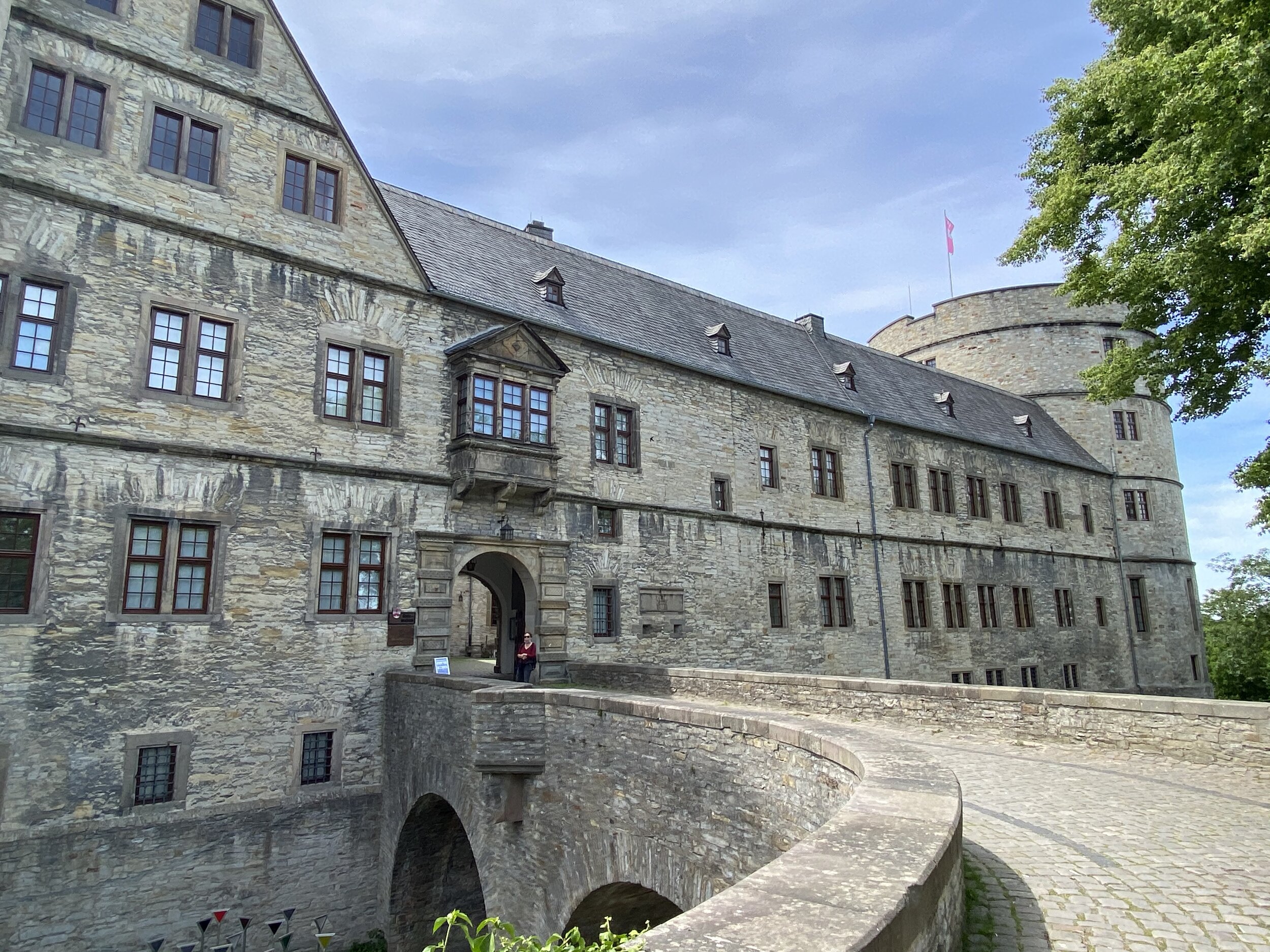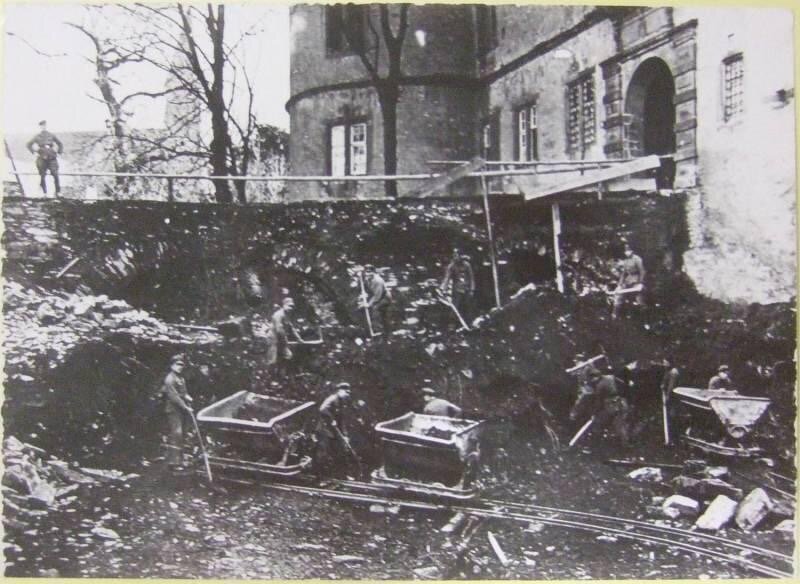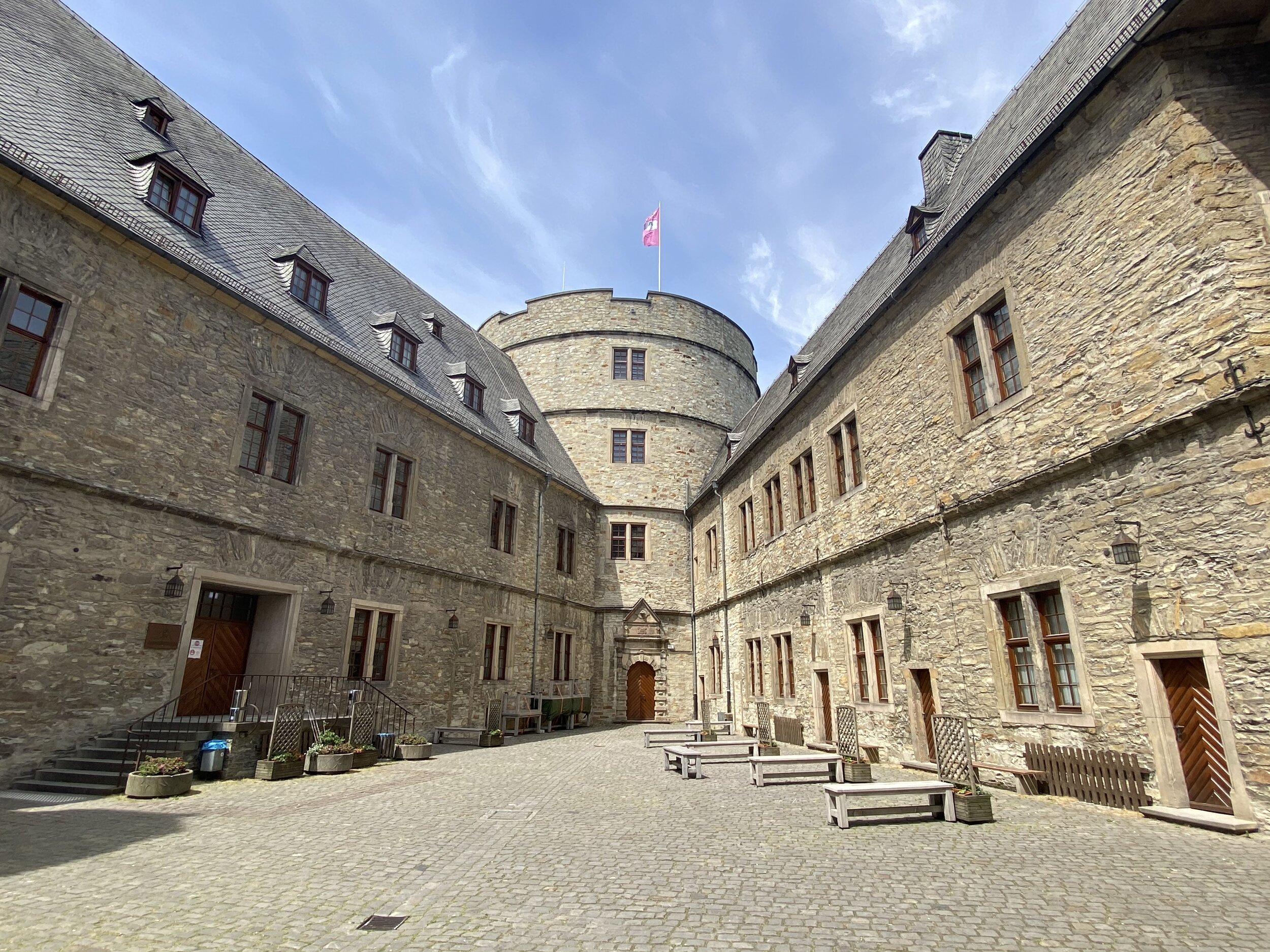Nazi Temple Of Doom - The Real Castle Wolfenstein
Hello and welcome to the On the Front blog, where we discuss all things WWII.
In this blog we are going to discuss the Wewelsburg Castle, in town of Wewelsburg, Westphalia, Germany. This castle often referred to as the Nazi Temple of Doom and was the inspiration behind the popular Castle Wolfenstein video game. So what is the mystery surrounding this castle?
The castle itself was thought by Heinrich Himmler the leader of the SS to have mystic powers and was to be turned into the spiritual Mecca for the Nazi occult. A place for the 12 SS department heads and other SS elite to meet and prepare themselves spiritually for future assignments. This purpose though was never fully realised and only two such meetings actually took place. The last between 12-15th of June 1941, one week before the launch of Operation Barbarossa code name for the invasion of the Soviet Union. At the meeting Himmler told his generals the aim of the campaign was to eliminate some 30 million Slavs; the Nazi regime would come tragically close to this number.
Wewelsburg Castle entrance
Wewelsburg Castle foundations date back to the Middles Ages. As the site stands today, the castle design dates to the 17th century. The castle is located near the Teutoburg Forest. The {then} believed the site where Arminus, a Germanic tribe leader defeated the Roman Army which in part lends the castle to ancient fantasy. For the last 75 years the castle has exuded a dark fascination luring Satanists and Neo-Nazi’s alike drawn in by pagan symbology and Nazi occultism making this site a kind of sadistic pilgrimage.
Much of the pseudo-religious mystery that has surrounded this castle since 1945 of torch-lit ceremonies, ancient Nordic and pagan rituals and the mythos of the Ancient Aryan is all fake.
So, where do these rumours come from?
Himmler laying a wreath in Wewelsburg Castle
Much of the rumours stem from Himmler’s own delusional understanding and interpretation of Germanic and Nordic mythology. He was fascinated by prophecy, magical power and the belief that the Aryans were a super race. The SS was designed to be the very embodiment of this belief.
Himmler desperately wanted a facility where he could drum these values into future SS leaders. Acquired in 1934, Himmler leased the property for 100 years at the symbolic rental price of 1 Reichsmark per year. Initially he planned to turn the facility into a leadership school for SS officers’, but this later changed, and it was designed as a meeting point for the SS elite.
The focus of the Wewelsburg Castle was to research pseudo-scientific theories of Germanic pre- and early history, medieval history, folklore and genealogy. All of this was intended to provide the underpinnings for the racial teachings of the SS. Vast archaeological excavation sites sprung up here and at other important sites such as the Externsteine, a place of Christian worship that was thought by the Nazi’s to have been a pagan place of worship.
German soldiers posing for a photo at the Externsteine
So, what did they discover? In a word; Nothing.
All theories put forward by Nazi archaeologists didn’t stand up to scrutiny and only through intimidation and suppression of academia were any of these theories able to be published. The lack of evidence didn’t stop Himmler though, if he couldn’t find the archaeology, he would fake it.
A lot of work was put into acquiring ancient artefacts such as the Spear of Destiny, in an Indiana Jones style collecting spree. Even the Castles architecture is fake. Construction of mystic meeting halls inspired by tales of King Arthur and the Knights of the Round table had the 17th century plaster ripped from the walls and replaced with stone cladding to give the interior a more medieval feel.
The arches in the "Hall of Generals" may look medieval, but the pillars are made of concrete. It's an extraordinary example of how Himmler tried to falsify and recreate history to justify their own pseudo-religious ideology. Like much of the Nazi pomp and extravagance when you peak behind the curtain, there is nothing there.
Hall of Generals
The exact nature of any rituals that were performed here is unknown. Historians are certain though that no pagan rituals to evoke Nordic gods or anything of the like took place. The Nazi party in the years after taking power would find themselves butting heads with the Christian church and used their newly discovered fake archaeology to support their push for Germans to move away from traditional Christian celebrations and instead to celebrate pagan inspired Nazi occultism even creating their own Christmas and marriage celebrations.
Nazi wedding ceremony conducted at Wewelsburg Castle
In the twelve years Himmler had ownership of the castle this intended pseudo-religious site did play host to several marriages and swearing in ceremonies for the SS generals. Also stored here were the SS Honour Rings of fallen comrades. They were stored in a chest in the castles crypt, to symbolise the ongoing membership of the deceased SS members. In all 11.500 rings were kept here but no one knows what happened to them after the war. Rumour has it that they are buried in a nearby mountain.
Himmler’s dreams for the castle were never fully realised. His aims for turning the site into the spiritual centre for the new world of the Nazi ideology following the “final victory”, saw the castle design take on monolithic proportions. So grand were his plans that it was intended that the Wewelburg towns people be relocated to the newly conquered Lebensraum in the east and the town flooded.
Concentration camp prisoners working at Wewelsburg Castle digging
Construction of the site began using labours from the Freiwillige Arbeitsdeints but the outbreak of the Second World War saw these workers conscripted into the military and a more sinister contruction method was used. Himmler had a purpose-built concentration camp for the castle’s construction. Over 3,900 prisoners worked on the project. The working conditions were so horrible that the Wewelsburg camp had staggeringly high mortality rate with at least 1,229 people dying of exhaustion, ill treatment or execution. After the defeat at Stalingrad, construction at the Wewelsburg castle stopped. A new decree required all nonessential construction projects not contributing to the war effort were to be ceased and the site was left to 42 prisoners and SS guards.
Shortly before the end of the war, Himmler ordered the castle be destroyed. SS Maj. Hainz Macher along with 15 soldiers destroyed much of the site with explosives and anti-tank mines. What remained standing was set on fire and in the days that followed the site was extensively looted. The medieval exterior though survived and two rooms in the north tower have been preserved as structural remains of Nazi architecture. The “Crypt” and the Hall of the Supreme SS Leaders showing the sun wheel motif in the floor are original.
Interior courtyard. To the left is the hostel entrance.
On March 31,1945 the site and the concentration camp was liberated by the US 3rd Armoured Division. Reconstruction of the castle began in 1948 and in 1950 was re-opened as a museum and youth hostel. Today the entire site is a war monument, the museum is located in the former SS guard house in the castle forecourt. If you would like to stay here the Youth hostel is still in operation.
Would you stay here? Let me know your thoughts in those comments down below and what you think of the Nazi Temple of Doom.
Thank you for reading and if you liked this article hit that like button and I’ll see you next time On the Front.







